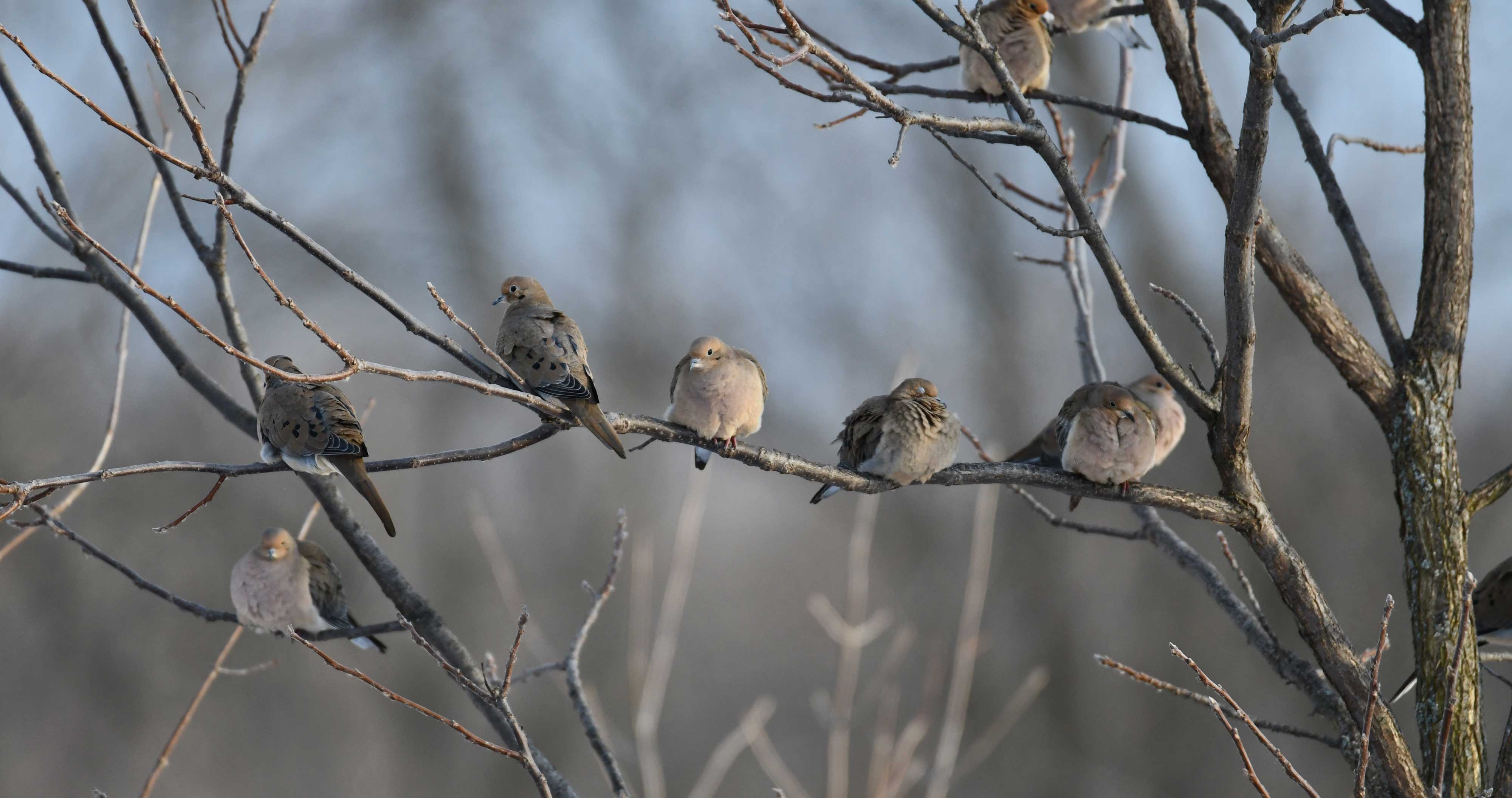Mourning doves named for their somber, sorrowful song

A coooo coooo coo coo breaking the silence must be the call of an owl, right? It could be, but more likely it's the call of a mourning dove.
Mourning doves might sing their familiar call in the morning, but it's not the time of day for which they are named. These doves are instead named their solemn, mournful song, according to the National Audubon Society. It’s a familiar call to many, because these birds are right at home living alongside humans.
The funereal cooing song of the mourning dove is most always the sound of a male wooing or singing out to a female, the Audubon Society reports. Males will perch in a preferred spot and call out to the female doves, and they can be protective of these spots, even sometimes defending them from other males that get too close.
Birders may also come to recognize a second sound associated with mourning doves. Their wings will create a whistling sound as they take off and land, and it can serve as a warning sound for other nearby birds, according to the American Bird Conservancy. The whistle is produced as air rushes through their wing feathers. Other birds that make similar sounds include the American woodcock and the Wilson’s snipe.
Mourning doves are part of the pigeon family, and they look similar to rock pigeons, the birds many people associate with cities. Mourning doves are primarily buff, tan or grayish in color, with bold black wing spots. Their long tail feathers stick out from their bulky bodies. Because of their plump bodies and long tail feathers, even novice birders can identify a mourning dove by silhouette alone.
The sights and sounds of mourning doves are familiar to many across the United States because they are one of the most adaptable and widespread birds around, living across almost the entire United States. They can survive in just about any type of habitat, including the desert, although they prefer wide open spaces like parks, farmland and our backyards rather than woody areas, the Audubon Society reports.
Mourning doves are devoted seed eaters, with seeds accounting for about 99% of their diet, the Cornell Lab of Ornithology reports. They will eat seeds from a variety of plants, including grasses and seeds, and they will occasionally consume non-seed foods such as berries and snails.
The are big eaters too, consuming between 12% and 20% of their body weight every day, according to the National Audubon Society. They eat similar to how you might picture a chipmunk eating. Once they find a good source of food, they fill up on it with the help of a pouch in their throats called a crop. These crops can hold scores of seeds, so they don't have to eat all the seeds at once. Instead, they can return to a safe spot to digest the seeds.
Because of their proclivity for eating seeds, mourning doves are frequent visitors to bird feeders, particularly in the winter. They'll often feed on seed in feeders, but they are ground feeders so they will also eat spilled seed. You can scatter seed around your feeders to attract these doves.
Mourning doves can use their beaks like a straw, sucking up liquid rather than tilting their heads back to drink, according to the National Audubon Society. This trait, which all birds in the pigeon and dove family share, is useful because it allows them to drink more quickly, and they are not as vulnerable to predators.
In natural areas, mourning doves typically nest in trees, but they also sometimes nest on the ground, especially in the American West where trees are not as common, the Cornell Lab reports. And because they are comfortable around humans, it’s not uncommon to find a mourning dove nest in rain gutters or even a flowerpot.
The male and female work together on nest building, with the male birds bringing twigs, grasses and other materials to the female to weave together. The female usually lays two eggs, and both the male and female will spend time incubating the nest, according to the American Bird Conservancy.
In the first week after hatching, the young birds, called squabs, eat a substance called crop milk that is regurgitated by the mother and father. The “milk,” which is high in protein and fat, is made of secretions from their crop linings. After about a week of eating only crop milk, the parents will switch to feeding the squabs seeds that they soften before feeding them.
Like other members of the pigeon family, mourning doves are a game bird, the Cornell Lab of Ornithology reports. They are the most abundant game bird in North America, with more than 20 million harvested by hunters each year.
Their ground-feeding behavior puts them at risk of lead poisoning because the birds often incidentally ingest lead pellets in and around hunting grounds, the American Bird Conservancy reports. Despite this, the mourning dove's population remains high, estimated at about 350 million across the United States.
